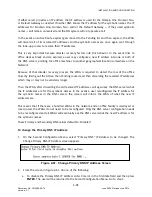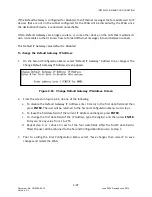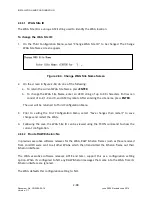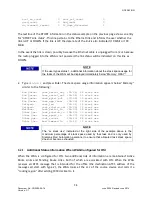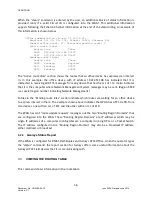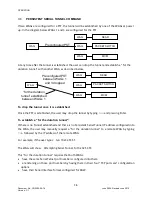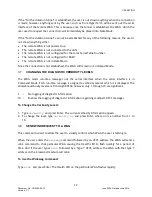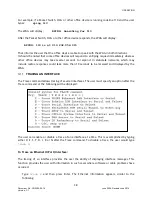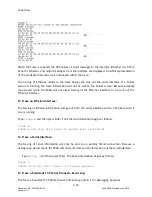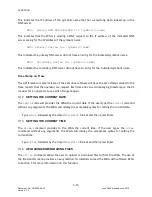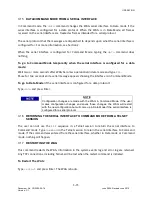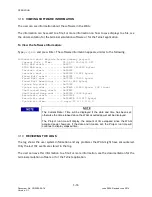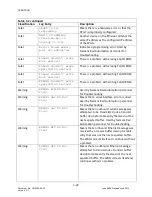
OPERATION
3-8
Document No.: COM-00-05-16 June 2006, Revised June 2014
Version: C.1
3.9
SENDING A PING TO AN IP ADDRESS
The Ping command accepts an IP address and causes the WAG to issue an ICMP PING frame out
the Ethernet interface. If a response from a device with that offered IP address is received, the
WAG will display a sequence number to the Ping response.
To Use the Ping Command:
Type
ping
and an IP address and then press Enter. The ping information appears, similar to the
following:
ping 10.232.48.226
Sending ICMP PING to 10.232.48.226
PING Response sequence 0x3436
The sequence number is a pseudo random value that changes every time a PING is issued. In the
event no response is detected by the WAG, the “Ping Response” line displayed above will not
appear.
3.10
SENDING A ROUTE PING REQUEST
This is a diagnostic command that is very useful for determining whether a communications path
exists between the WAG and an office system.
To Use the Route Ping Command:
Type
rping
followed by a route region number and then press Enter.
For example, if a user wants to know whether the WAG can talk to AServer in the office, the user
can type:
rping 9999
NOTE
9999 is the special Route Region number that means “Network Management
System”.
And if the office hears the “Route Ping” request that the WAG sends, it will respond causing the
WAG to display the IP address of the office device:
RPING: 9999 is at 010.232.048.030
If the office does not hear the Route Ping or if the response from the office does not make it
back to the WAG, the WAG will not display the “is at” message which lets the user know that bi-
directional communications is not working.
If the user wants to know whether the WAG can communicate with a Packet Switch or an OCG on
the LAN, the Rping command is used with a Route Region number that is a normal codeline
number.


